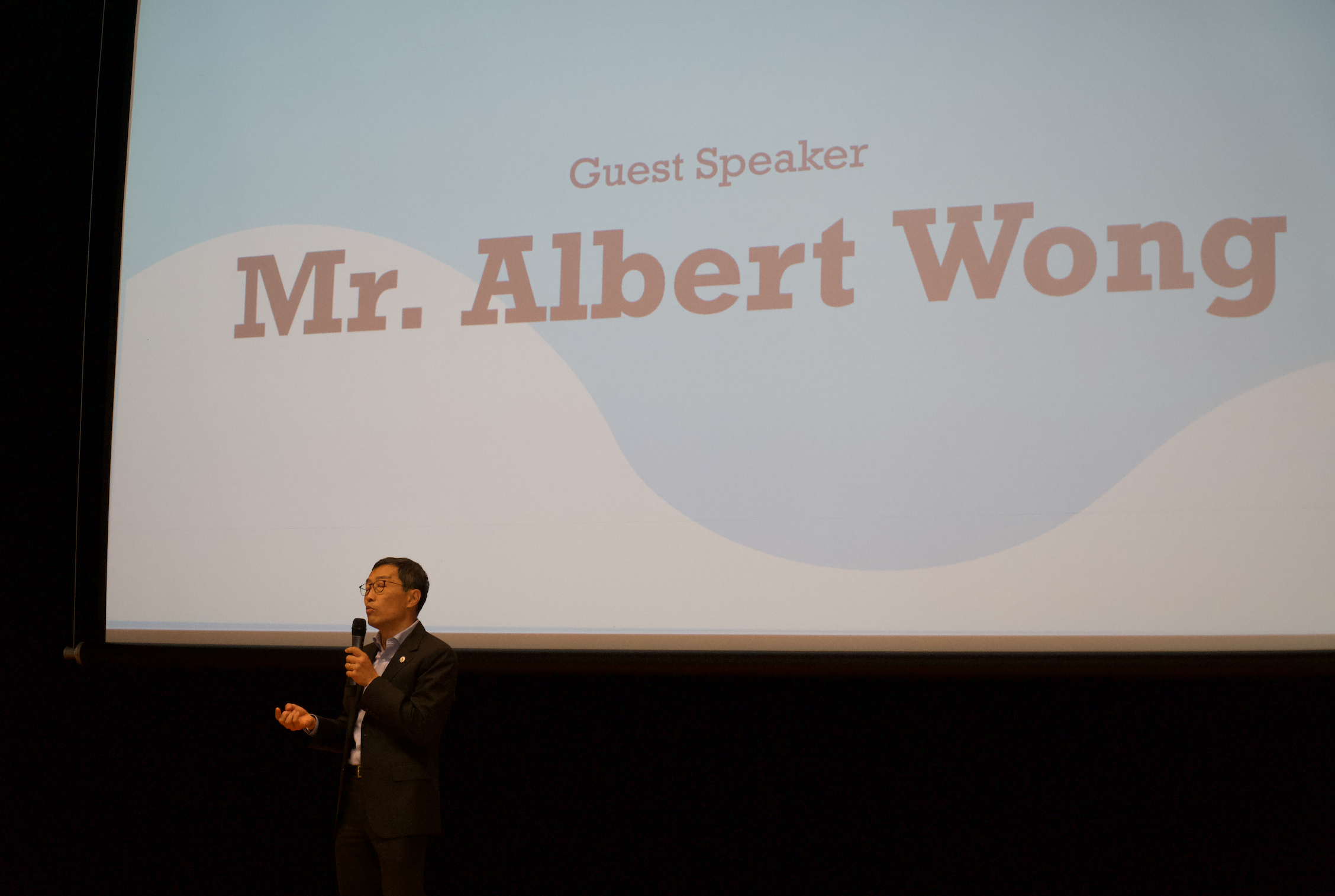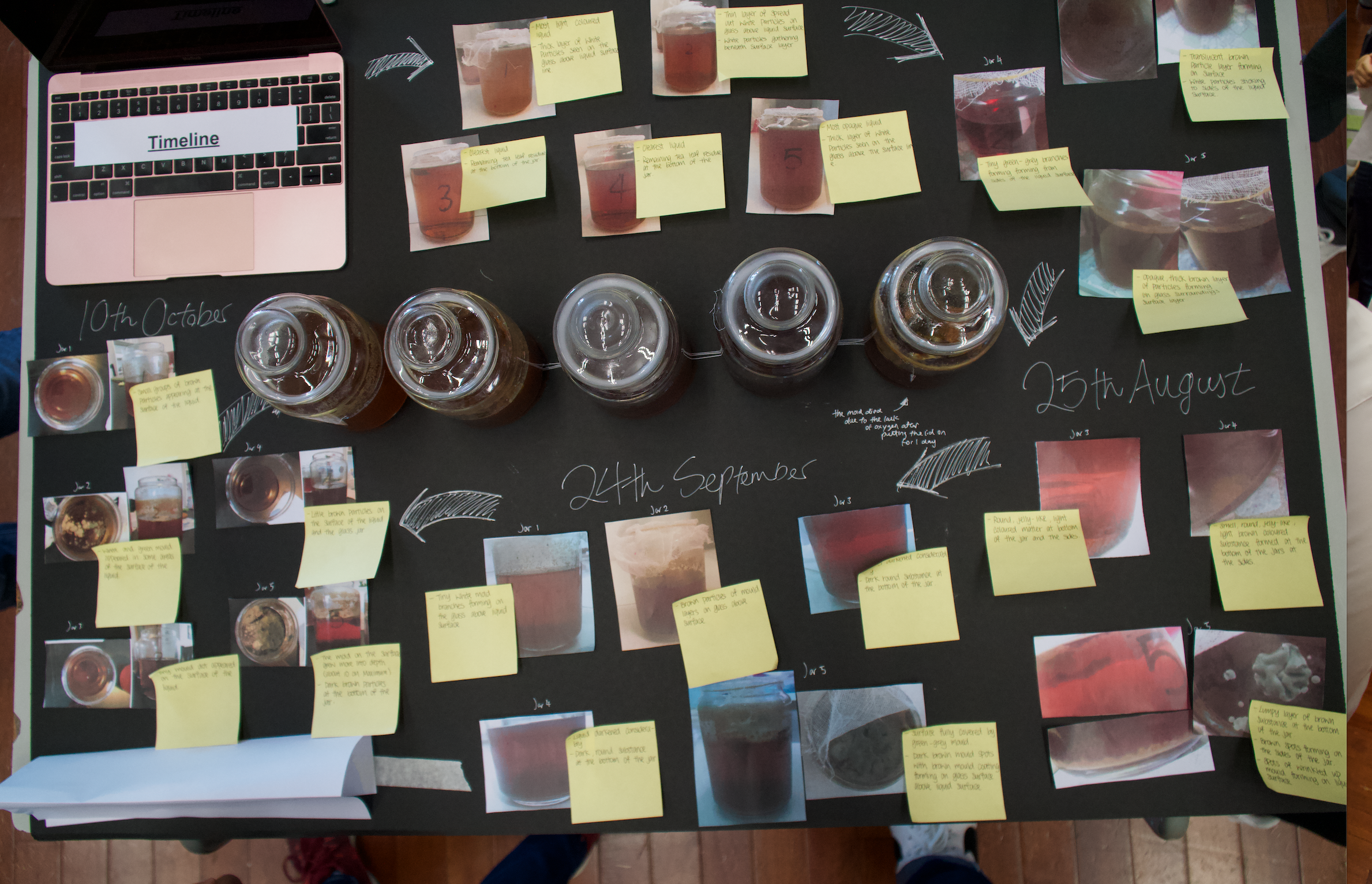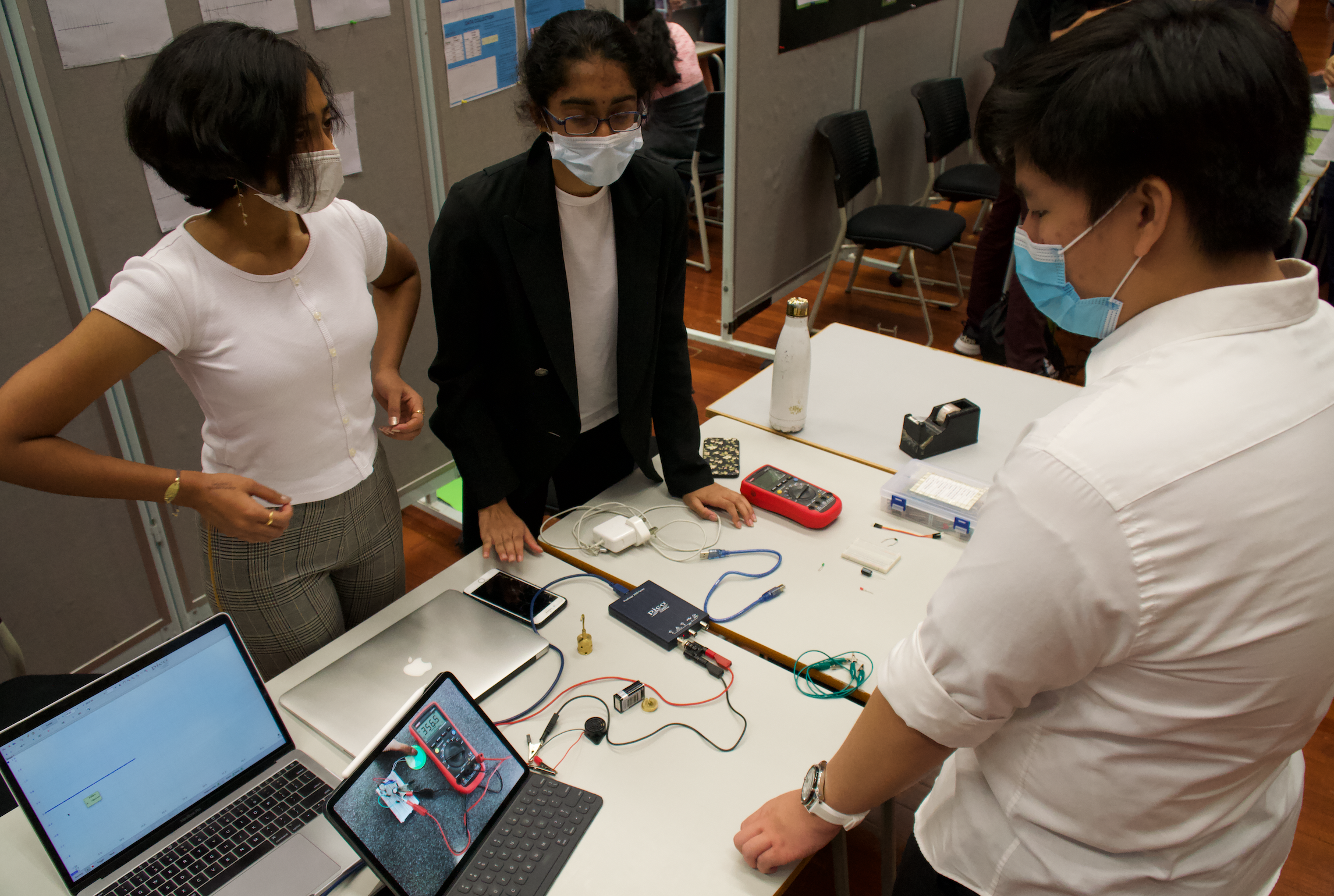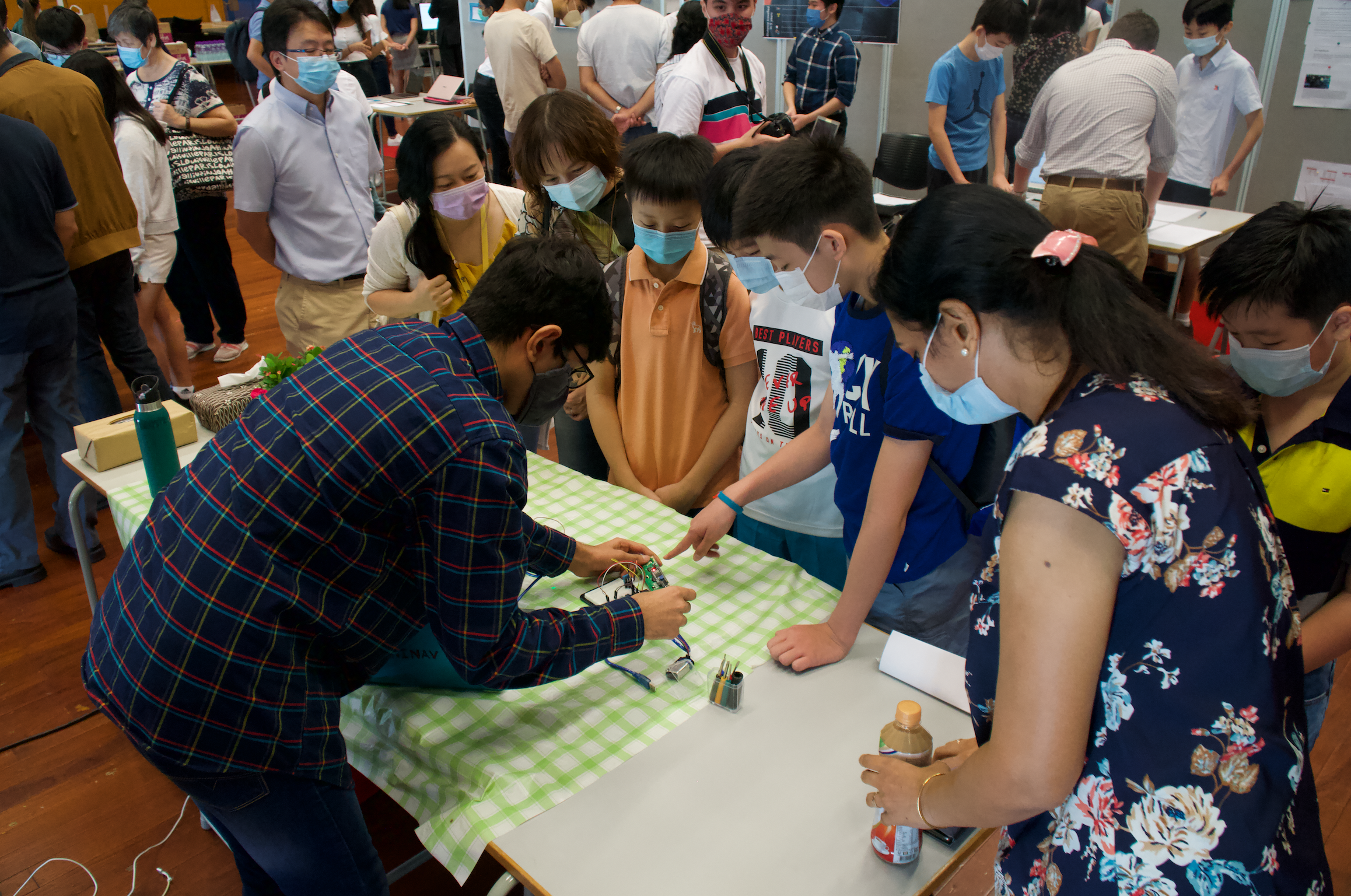STEM fair excites passion for innovation
By Ariana Jones
“What does innovation mean?” asked Mr. Albert Wong, the CEO of Science Park, in his opening speech for the ESF-wide Inno Fair hosted last Saturday at RCHK. He continued to explain the difference between scientific discovery, invention and innovation to the listening attendants, urging representing teachers, professors, their honourable mentees and excited visiting students and parents alike to use his answer as a guiding principle throughout their lives when approaching all things science. “Discovery doesn’t do anything, invention is making something useful out of discoveries, and innovation is making something accessible to people … Innovation starts with people just like you.”
Walking around the array of booths, all attendants at the fair got the chance to learn about each student group’s extensively researched topic, explained from the very basics of the related field of science all the way through to studied theories and concepts typically learned by university-level academics.
“One thing about being a student here at RCHK, one thing that really – sort of – hurt me, was that there was a lot of talent and also passion for sciences but there wasn’t really opportunities like this that arose often,” said Brendan Mah, a Year 13 student at RCHK and one of the leading organisers of a team of students who set up the fair.
“Innovation starts with people just like you.”
Mah explained that part of his disappointment came from the fact that he is in charge of leading the only long-term after school activity orientated on the sciences, called the Space and Aeronautics Society. When asked why he organised this Inno Fair, a simple idea which he and his classmate, Tor Keat, developed into a CAS project, Mah answered that, “I really want to share my interest in science with other people, and that’s also one of the reasons why I became the leader of the Space and Aeronautics Society. But I wanted to go bigger; get more people on board; make it even more exciting. Get more people to really come together, which is why I had the idea for this fair.”
Whilst the purpose of the fair was intended towards sharing collective passion for and interest in the pursuit of science, there were certainly alternative reasons that contributed to the participation of many of the students who signed up for the fair.
When asked to explain their reasoning for attempting the difficult challenge of initiating a personal science project, three participating Year 11 students from Island School – Fiorelli Wong, Abigail Ho and Aoi Sakamato – answered that they were primarily interested in the learning experience. “I believe that all three of us are really interested in the STEM sciences. When we heard about the innovation fair, we thought it would be a perfect opportunity as well as having the access to these professors as well [sic]. This is a once in a lifetime opportunity,” said Sakamato.
Professor Hauting Wang, one of the several university professors from The Chinese University of Hong Kong who had volunteered to mentor stated that, “To me the primary goal of this event should be to inspire the young kids to do STEM. To do science! I think not necessarily to the point that they already have products to produce for this fair. I think to me, to inspire young girls and boys, it should achieve that goal.”
Although both Mah and Professor Wang believed that the fair was the perfect opportunity for participating students to inspire visiting attendants, further interviews revealed that this goal to inspire was at quite a contrast to what was on many of the students’ minds.
When asked how she felt about the fair in general terms, Ho from Island School commented briefly that, “When I came into the room, I was really calm. But through looking at everyone else's projects, because everyone’s is literally so amazing and well-produced…” before trailing off. Ho’s group partner, Sakamato, concluded that, “I have trust in our project that our’s also has a chance of winning as well.”
Attending professors who were involved in the mentoring program were given rubrics to judge each project on the day, so it’s no wonder that as a result, some students felt pressure to achieve not only for their own personal learning experiences but also to gain from the competitive side of the innovation fair by winning awards as well.
Even with the competition on their minds however, the general mood of all the interviewed student participants remained positive throughout the day. Megan Chan and Michelle Wong, two participating Year 11 students from RCHK, told The Truth a short while after beginning their period of presenting-time that, “We’re both a little intimidated because we’re doing something psychology-based compared to everyone else, who are super STEM focused. But I think overall for the both of us, we are not showing-off our data or our results, it’s more like what we’ve gained from this experience because it’s our first time doing a large experiment, so it was really great learning for both of us.”
This focus on communicating the research and learning processes gained from their experiments rather than any extraordinary achievements and outcomes was stressed by all of the presenting students at the fair. This may have been due to the fact that Mah and his team designed a judging criteria where the presentation of methodology and research findings was massively emphasised, and not so much the outcome – or the innovative aspect of the experiments instead. This allowed students to have more freedom in their investigations that they chose to pursue, but it also kept them all in line with utilizing correct scientific methodology and also the usage of fair experimental designs – as taught in the IB curriculum.
“We’ve gained from this experience because it’s our first time doing a large experiment, so it was really great learning for both of us.”
So although the concept of innovation may have been the focus of Mr. Albert Wong’s speech – due to him being the CEO of the building for science administration in Hong Kong, which Mah described as, “a hub for all of these new and upcoming ideas” – the very design of each student’s project was based around the concept of focusing on scientific methodology and establishing the understanding and utilization of this instead.
Professor Wang’s response in stating that, “I don’t think that innovation is the only thing I care about,” when asked whether or not she thought the purpose of the fair was to promote innovation concluded that there are other elements of scientific research that are highly regarded by experts within the STEM community as well. She rationalised that, “Albert mentioned innovation and basic research, knowledge discovery [and] invention; I think all the aspects should be emphasised. Innovation has to be based on invention and basic knowledge discovery. I think all of them are important. In order to have a product, you must first understand all of these basic things. So we don’t necessarily only promote innovation, we should promote all of these aspects.”
Associate Professor Mr. Condon Lau from the City University of Hong Kong stated in an exclusive interview with the Truth that, “Science, research, innovation; [they’re] very important – that’s how better things come about – but [they’re] also very difficult. You have to persist.” This particularly applied to his student mentee, who tried to design a new and improved stent for medical patients with damaged or ruptured blood vessels.
“There are companies that make stents, and it might be more their thing. At university things are a little different. At university it tends to be scientific publication orientated. So you would, say for example instead, study how and what flows around the stent. Rather than try to design a new stent,” commented Mr. Lau, whose explanation of this difference between scientific innovation and research really highlighted the differences between what might’ve been thought to be demanded of the participating students, but what was really rather the step that students had the option to pursue after completing their investigations.
When asked to talk about the professionalism of the experiment conducted by her three student mentees, Airi Tachino (Year 10), Clarrisa Ki (Year 12) and Renee Au (Year 12) from Island School), in comparison to investigations that might be conducted by university-educated students and academics, Professor Wang stated that, “I am very impressed with the idea they came up with. And they did all the research, collect the data, analyse the data, make the poster… I am truly impressed. But of course it’s not like university professor-level research, but they got the basic concept [of] how to do the research.”
Wang’s mentees found that the opportunity to conduct their experiment with a guiding professor allowed them to extend their investigation into much further depth, and Au explained that Professor Wang also helped them guide the process of their investigation in order for their experiment to meet the judging criteria. Au explained to The Truth that, “First of all, we didn’t actually know at the start what sort of experiment we should design. She helped suggest ideas, and from there we just researched on our own.”
“From there we agreed to do a simple apple-browning experiment. And we extended it further by using image analysis software that she introduced,” stated Au as she went on to explain to what extent that Professor Wang was able to extend their group, “Her and [another Doctor] from CUHK both helped us to learn how to use ImageJ. And basically we did this with her, and she told us how to exactly calculate things and from there we just did it all ourselves.”
“I am very impressed with the idea they came up with. And they did all the research, collect the data, analyse the data, make the poster… I am truly impressed.”
Mah explained that his team’s reasoning for contacting professors from “every single engineering property et cetera – so to all the Hong Kong universities,” wasn’t just to persuade students to sign up for the fair, since he thought that not only that, “...it’d be much more interesting and rewarding for participants to be able to interact with these industry leaders,” but that it would also, “...really drive the project[s] to be the best they can be. And it really gives the professors and the students the opportunity to learn from each other.” He concluded that as a result the Inno Fair is much more about “...building the initiative and the inspiration in other people to start doing other things.”
The mentorship program was clearly extraordinarily beneficial, proving the fair to be the perfect medium for Mah to satisfy both of his goals: to generate initiation and inspiration in all participating students as well as visitors involved with the fair.
With its success in bringing forth new ideas and passion in both participating students and visiting students alike, the fair certainly approaches scientific research and development in a sustainable and learner-based manner, managing to kickstart many innovative projects in the process.
As Ms. Vidya Madhaven, a chemistry teacher at RCHK, said, “[The students] have looked at [their investigations] from a different perspective, trying to make it more appealing … So they have come up with really innovative topics,” adding that ESF could “absolutely” change how STEM projects and science subjects are taught at school, based on what she had seen at the Inno Fair.
“I’m not sure in what aspect. We’ll have to sit down and think about it – especially given the constraints of the current situation with the pandemic and everything – how all of this can be incorporated into different year levels,” Ms. Madhavan summarised as she explained the effectiveness of giving students more time to experiment on their own and develop their own perspectives for topics related to STEM at school. “It’s only a right fit for specific year levels, some of these [year levels] can be more difficult. I mean at RC at least we are trying to do that – especially in the sciences – we are trying to come up with innovative ways of chemistry ... So we’re trying, but we don’t know how successful it is. We’ll see!”



